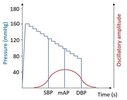Thug4
New Member
- Joined
- May 4, 2021
- Messages
- 1
- Reaction score
- 1
Hi, yesterday I was in a GI cholonoscopy and after the insertion of the camera, the pt BP dropped. My attending asked me why the diastolic was so decreased. His answer was because diast BP is equal to preload and the patient “needed volume”.
Is this concept right? I searched in the web and Guyton but could not find this correlation
Tks
Is this concept right? I searched in the web and Guyton but could not find this correlation
Tks


